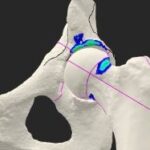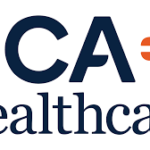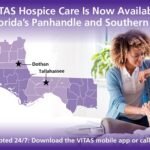.jpg) It’s been 25 years since Hurricane Andrew’s 165-mph winds pummeled and broke apart Homestead Hospital, just 30 miles south of Miami.
It’s been 25 years since Hurricane Andrew’s 165-mph winds pummeled and broke apart Homestead Hospital, just 30 miles south of Miami.
The night of terror, the grueling aftermath and the long road to rebuilding as the hospital’s president gave me first-hand experience in preparing for the next natural disaster. The onset of this year’s hurricane season is sufficient reason that all medical centers in Florida should plan for such an emergency.
If that isn’t enough of an incentive, a new federal rule will go into effect in November that requires hospitals participating in Medicare and Medicaid to have an emergency preparedness plan in place – or else their certification will be in jeopardy.
And yet on a personal level, nothing could have prepared Homestead Hospital’s medical staff and administrators in 1992 for what they would experience with Hurricane Andrew.
Most Homestead Hospital employees owned homes in the booming South Dade bedroom community served by the 100-bed hospital. It was three-quarters full that day, but by nightfall, it overflowed with 400 patients seeking shelter, including pregnant women. We did not evacuate because the storm was predicted to hit farther north. The 52-year-old building was stocked with food and water and equipped with emergency generators to ride out the storm’s fringes.
The hurricane arrived point-blank with a force I hope never to see again in my lifetime. It shook the building and smashed windows, spewing rain and glass shards. Staff moved patients on makeshift gurneys made of bedsheets into hallways away from flying water and debris.
The next morning when calm weather returned, we unchained the hospital doors. I still get emotional when remembering the storm’s destruction all around us. Two-thirds of the hospital staff lost their homes that day. Half my home blew away. Nearby Homestead Air Force Base was wiped out.
Our community couldn’t handle such a monster storm. Throughout Miami-Dade County, fallen trees and power lines blocked roads. Ten people died. Millions of residents were without power. Fresh water ran out. Looting began. The county had to call in the National Guard.
Even so, our staff came to work, despite losing everything. Over the next days, and without much sleep, they treated their neighbors and strangers alike. More than four times the usual patients arrived with broken bones, severe gashes and other injuries. Then our staff began to leave. For good. They had nothing to keep them in our broken community. Our hospital, which endured $5 million in damages, began to struggle. Patients were unable to pay and state reimbursements were short in coming.
Homestead Hospital went from a thriving, profitable hospital into financial ruin, losing more than $15 million during the recovery. Three years later Baptist Health South Florida acquired it in a merger.
After much planning, the new Homestead Hospital opened in 2007. Its structure was designed to resist category 5 storms for uninterrupted care to patients. The windows are impact resistant. The first floor is raised to withstand a storm surge. Two diesel generators and two tanks holding 45,000 gallons of diesel gas can keep the hospital running on schedule for seven days.
The Department of Emergency Preparedness at Baptist Health was initiated to help coordinate readiness among our seven hospitals and more than 30 outpatient centers. It organizes rigorous drills and training. This includes sending teams of nurses and physicians to the Caribbean to provide disaster relief to island communities for real-time training under adverse conditions. Our emergency plan goes beyond storms to include the outbreak of virulent diseases and man-made disasters, such as bioterrorism.
It’s true that the darkest times can often bring us to the brightest places. But it’s always best to be prepared to ride the storm.
Lessons learned: you can never be prepared enough for the challenges. But here are the basics:
Organization
Set up a centralized emergency department to improve efficiency at a time when it’s needed most. It improves communication and ensures everyone receives the same information.
Communication
Gain your staff’s loyalty by letting them know how much you value them and their expertise. Their dedication to your organization will make the difference in whether your hospital can weather the storm. Provide expectations before, during and after the emergency so they can prepare personally and professionally. Staff members should plan to remain at the hospital for at least four days.
Partnerships
Seek out hospitals at least 75 miles away for assistance during and after natural disasters. Know where you will evacuate patients if your building isn’t hurricane proof. Coordinate with your community’s disaster response departments. Retain suppliers and distributors to deliver emergency supplies.
Preparation
Train and plan year-round to expect the worst. Make provisions to provide shelter to those seeking it, such as pregnant women and dialysis patients. Stockpile a week’s worth of hospital supplies, food, water and emergency fuel for generators. Fully staff trauma centers and emergency departments. Set up hotlines to activate before the storm to convey information about your facility to the public. Understand that should the storm hit, your lives and community will never be the same.

























